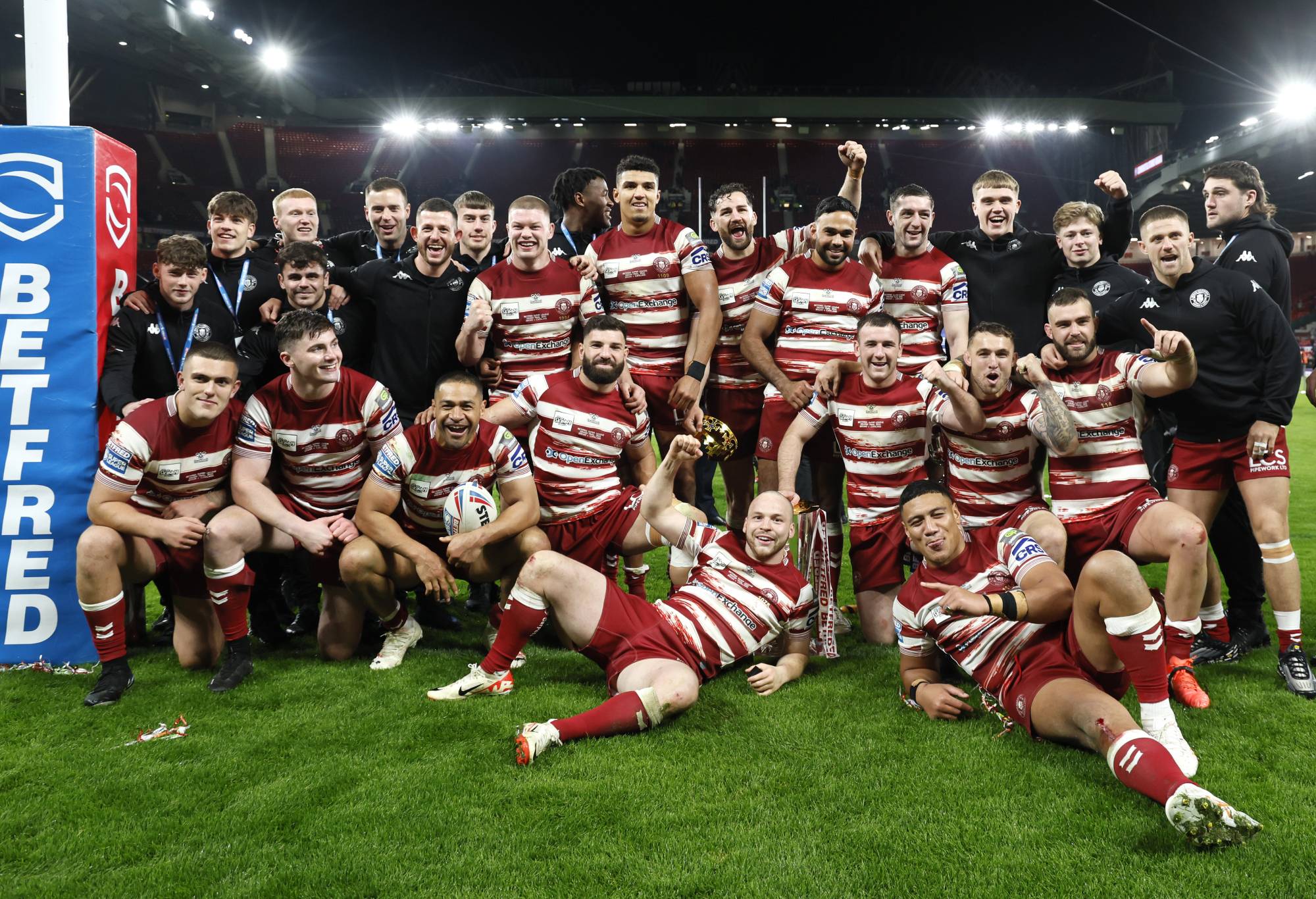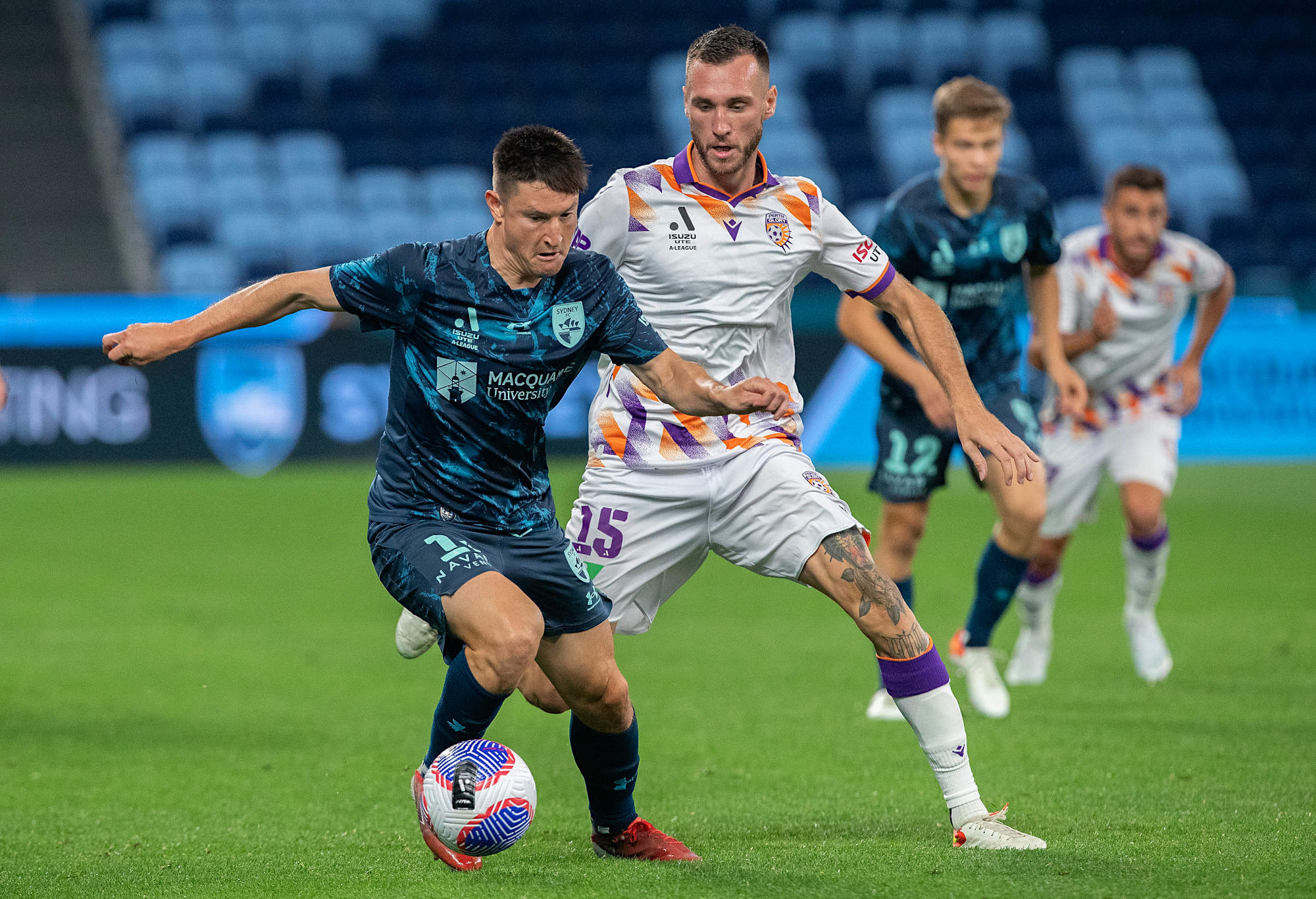We’re not so different, you and I. No, not Lex Luther and Superman: rugby league and soccer.
While there isn’t a comparison to be made in terms of popularity in Australia – that’s the NRL hands down – or globally, where soccer dominates, there is one very specific, highly comparable place where the pair can share ideas.
Australian football and British rugby league face the same problems, but often wildly differ in how they approach and, ultimately, solve them.
The basic situation is remarkably similar. They exist for a highly-committed, rusted on audience, but also hold a mass appeal that periodically breaks through, at least enough to tempt enthusiasts that there might be a mainstream breakout on the horizon.
Supporters of both – and for the sake of clarity, this journalist is that – often feel like there is a conspiracy to keep their sport down amid a tough landscape, and a partisan nature that often supersedes their clubs and goes into bat for the game itself.
The only people who can match A-League fans in their obsession over crowd figures, TV ratings, production values and commentary are Super League fans, for whom the first question is often about the attendance before the game itself.
Both exist in a situation where, speaking generally, they are the second or third most important sport.
In Australia, the A-League clearly falls behind the NRL and AFL, and has made steps not to take place at the same time as those two to maximise the amount of airtime it can get.
British rugby league did this decades ago, purposely aligning its season in the summer with the Australian winter in an attempt to get the best of the weather but also to give broadcasters something to show when there wasn’t any Premier League.
One could argue that Super League is the second most important code in most of the places where it is strong, but it wouldn’t be close to that on a national level and, in any event, being second to the Premier League (not to mention the other three divisions that inhabit the same geographical area) is like being third place anywhere else.
The two sports, however, have proven their ability to cut through – just not necessarily in a way that benefits them on a business level in the week-to-week of the season.
Nobody could deny the power of the Matildas as a social force over the winter just gone, or the Socceroos’ impact a year ago in Qatar.
But if you look at how that has translated to the domestic game, it’s hard to notice that it happened at all. The A-League Men averages just shy of 8,000 per game so far this season, exactly where it was last year.
In the UK, there was a Rugby League World Cup in 2022 that broke pretty much every viewership record going, and the sport has rarely failed to draw an audience when England or Great Britain have had big games on domestic television.
Yet in terms of bums on seats (or feet on terraces, as it more often is), the Super League saw a minor bump, taking it past the ALM to 9,270 in 2023, but that was their highest since 2012.
On the telly, the A-League’s move to Paramount+ and Network Ten is now three years old and could be described, politely, as a mixed success. At least we can pause and rewind now, but the slide towards irrelevancy is hard to ignore.
At the same time that the ALM moved to that platform, Super League announced that they would, for the first time, have a Free-to-Air (FTA) partner in Channel 4, and while that did deliver better ratings than before, the jury is very much still out on how that translates into greater revenue via advertising, if it does at all.
On a sporting level, the two codes exist in a state of push-and-pull with a much larger partner, who they spent a lot of time attempting to distinguish themselves from.
Sokkah fans will know this all too well, with a permanent battle between Australian football and perceived Eurosnobs who turn their nose up at the domestic game, while Pommy footy supporters have a similar relationship to the NRL, part awe of the better competition but part disdain for the league that only cares when it comes to poaching players.

Wigan Warriors celebrate with the Super League trophy. (Photo by Richard Sellers/PA Images via Getty Images)
For fans, the feeling that anyone good will ultimately leave – or be forever criticised for not having left – is always there, and the constant year-on-year churn of talent makes it more challenging to build long-term feelings towards players.
There is, of course, the counterbalance that the love is for the club, not the typically transient player, which is why both comps have undeniably excellent fan cultures.
That final part comes down to the financial side of things, and this is where there might be lessons to be learned for the A-League.
Where the Super League split from the governing body of the sport, the Rugby Football League (RFL), in 2018, they have since realigned and attracted a major private strategic partner, IMG, to take a long-term approach to the game with the intent of mapping out where it might be in a decade or more.
Much as British rugby league fans are – and rest assured, this is possible – even more pessimistic than A-League fans, there is an underlying feeling that things might get better soon, with a grading system introduced that should stratify how many clubs actually want to be full-time professional and, of that, how many could be sustainable under such an arrangement.
Plenty of historical clubs have had their noses put out by this, but, much like when the game went full-time in the mid-1990s, there does seem to be a realisation that change is required if the game is to grow and increase relevance.
The A-League split from Football Australia in 2020 to create the Australian Professional Leagues (APL) also found investment from private equity Silver Lake, but unlike IMG, they have shown little to suggest that they are in it for the long haul.

(Photo by Steve Christo – Corbis/Corbis via Getty Images)
In many ways, they have done the opposite with a highly unpopular decision to move the Grand Final to Sydney (since reversed) and the revelations that the league could be forced to buy out their partner by the end of the decade.
The second tier, too, is a point of severe divergence. Soccer fans in Australia were heartened to see progress on a National Second Division (at least if you live in NSW or Victoria), the Super League is doing anything possible to pull up the drawbridge on promotion and relegation.
It’s interesting that Australian football is intent on a second tier that is part of the APL structure, but without any confirmation that promotion and relegation will ever be a part of the system – in keeping with Australian tradition, if not football tradition – while British rugby league, with over a century of movement between divisions in line with other sports in Europe, has finally realised that such a structure is anathema to stable growth and development.
IMG have instigated a grading system for all 35 clubs in the British rugby league system, with points for on-field performance but also attendances, finances, fan numbers, community work and even geography, limiting the number of clubs per region.
Only those given an A are guaranteed Super League status, with seven of the 12 in the top tier making that mark in 2023, meaning the top five Grade B teams will get through as it currently stands. Theoretically, the league could expand if more than 12 were to show they were up to it with an A mark.
It has caused a few issues, especially in the border areas between the first and second levels.
For example, Toulouse Olympique were promoted to the Super League in 2021 only to be immediately relegated under the old system.
In their first attempt to get back up, they were defeated in the Grand Final by London Broncos, a club ranked 24th in the IMG gradings, the worst in the second tier.
It would be like relegating the new Auckland franchise after one year of operation and replacing them with South Hobart, and has led to the slightly farcical, if ultimately sensible, decision that London will contest next year’s Super League while TOXIII will play second tier footy, only for the pair to swap for 2025 when the new grading system kicks in.
The point of the whole IMG process has been to act as a catalyst that gives the Super League member clubs – who still own the majority shares – a kick up the backside.
Those who were all-but guaranteed to stay in the comp despite adding very little are now told that they have to buck up their ideas to be kept in the league.
While it has been a tough pill to swallow for some historic teams, it has shifted the burden onto the clubs to make themselves better across the board, with clear, transparent rules that anyone can read and understand.
It’s something for the APL to consider. The A-League itself was formed in a similar process in the early 2000s, replacing the likes of Sydney Olympic and APIA Leichhardt with bigger, more centralised professional outfits, but 20 years on, attendances are stagnant and audiences dwindling.

(Photo by Mark Metcalfe/Getty Images)
At this stage, do Macarthur FC add extra value with their 3,500 average attendance that Sydney United and Marconi Stallions, just up the road, do not? An IMG-style grading system might find that out. What about Western United (who draw even fewer fans) and South Melbourne?
As it stands, one could suggest that the A-League and the Super League are in similar places, with similar challenges around relevancy, finance and future prospects.
Yet they are also in a similar place regarding their strengths, with hugely passionate fans, a clear niche in the market and – when the bluster is stripped away – a highly entertaining product.
Those who tune into matches are rarely disappointed, and while the concept of Peak A-League is yet to transfer to the UK, one can guarantee multiple viral moments a year that straddle the line between comedy and quality.
One of the aspects that both comps share, and what they should both concentrate on, is the fallacy of comparison.
To its detractors, the A-League fails because it is not European football, and the Super League fails because it is not the NRL. The sooner that both stop making that link, the better.































































































